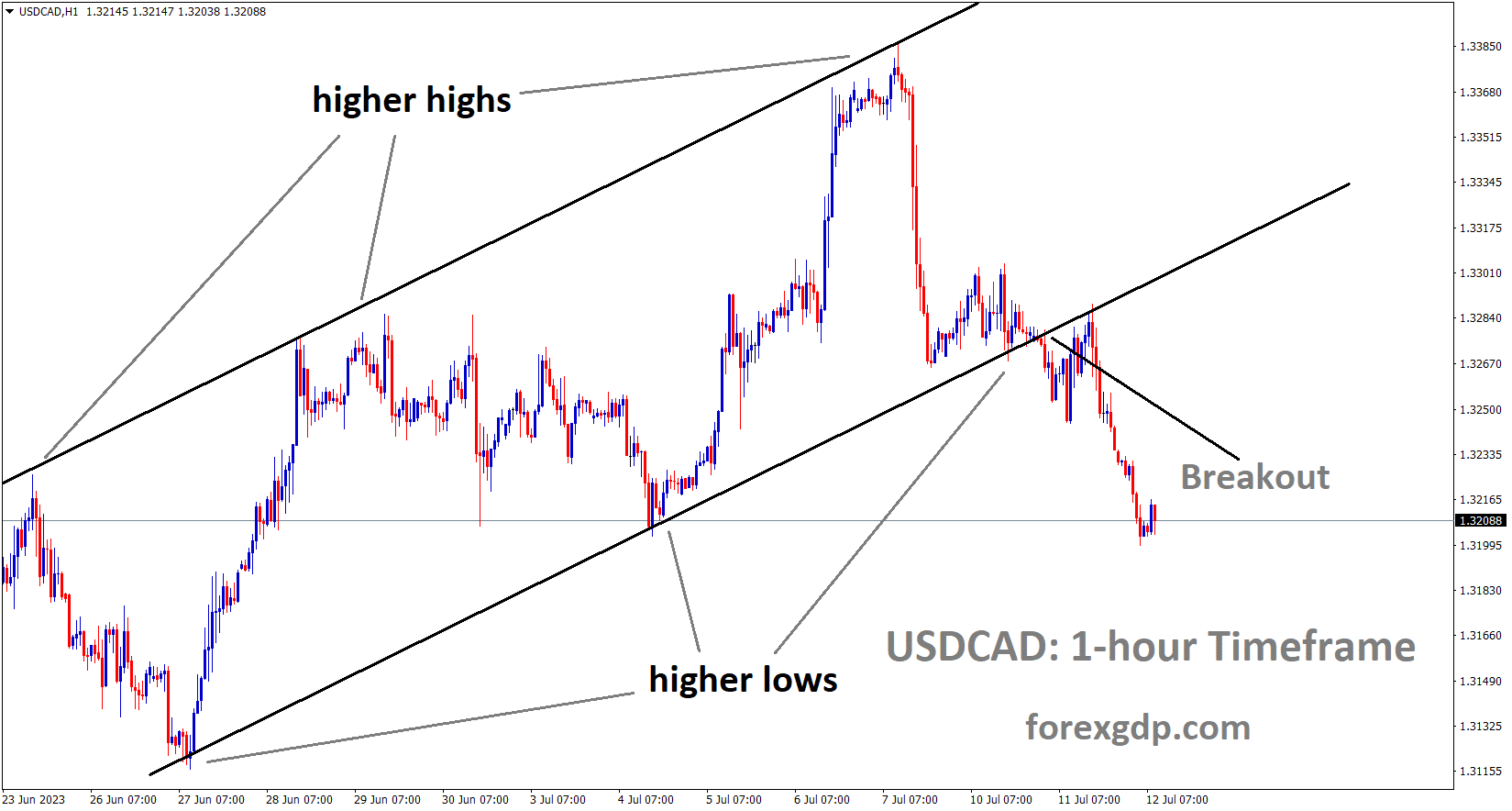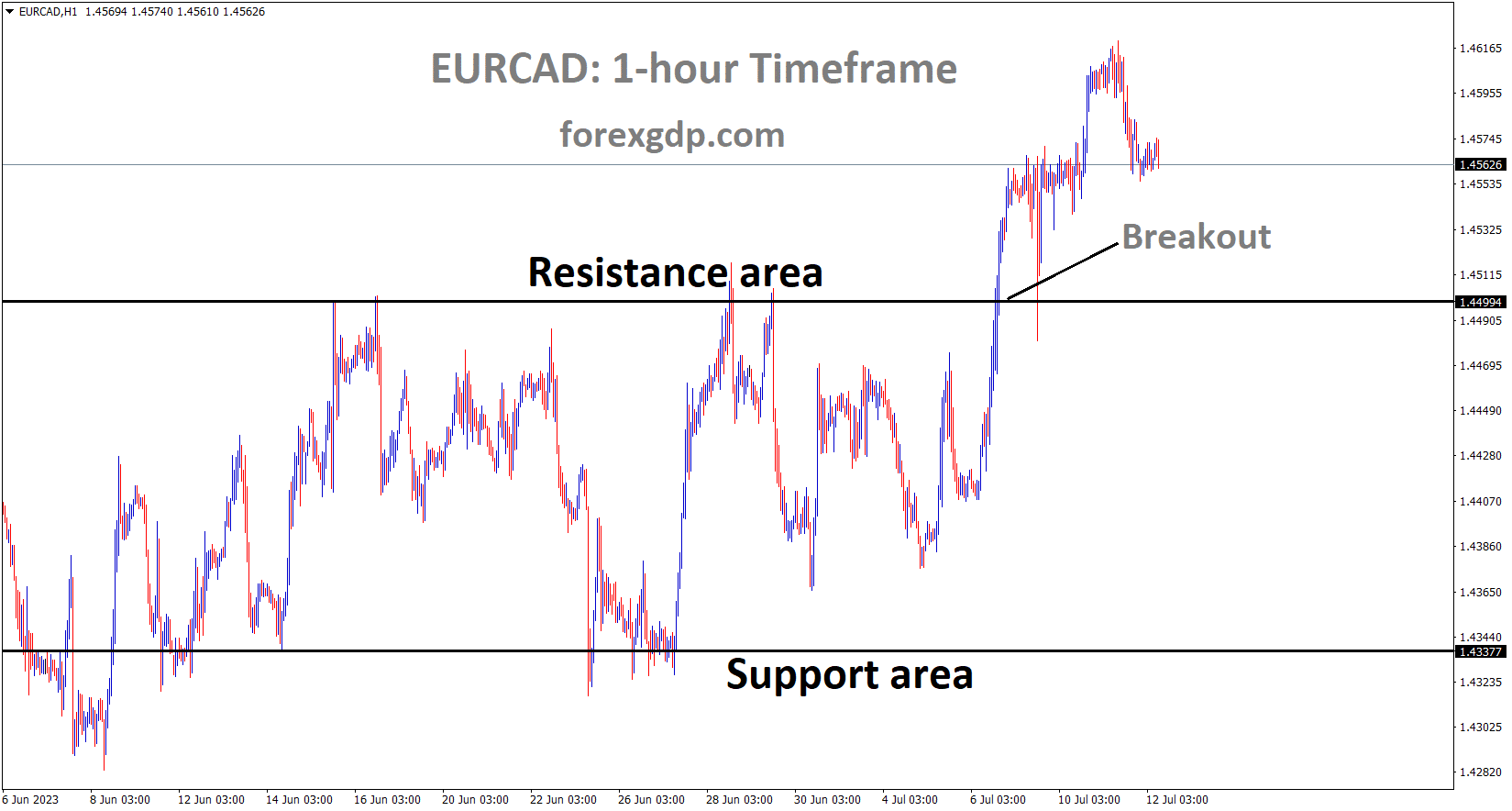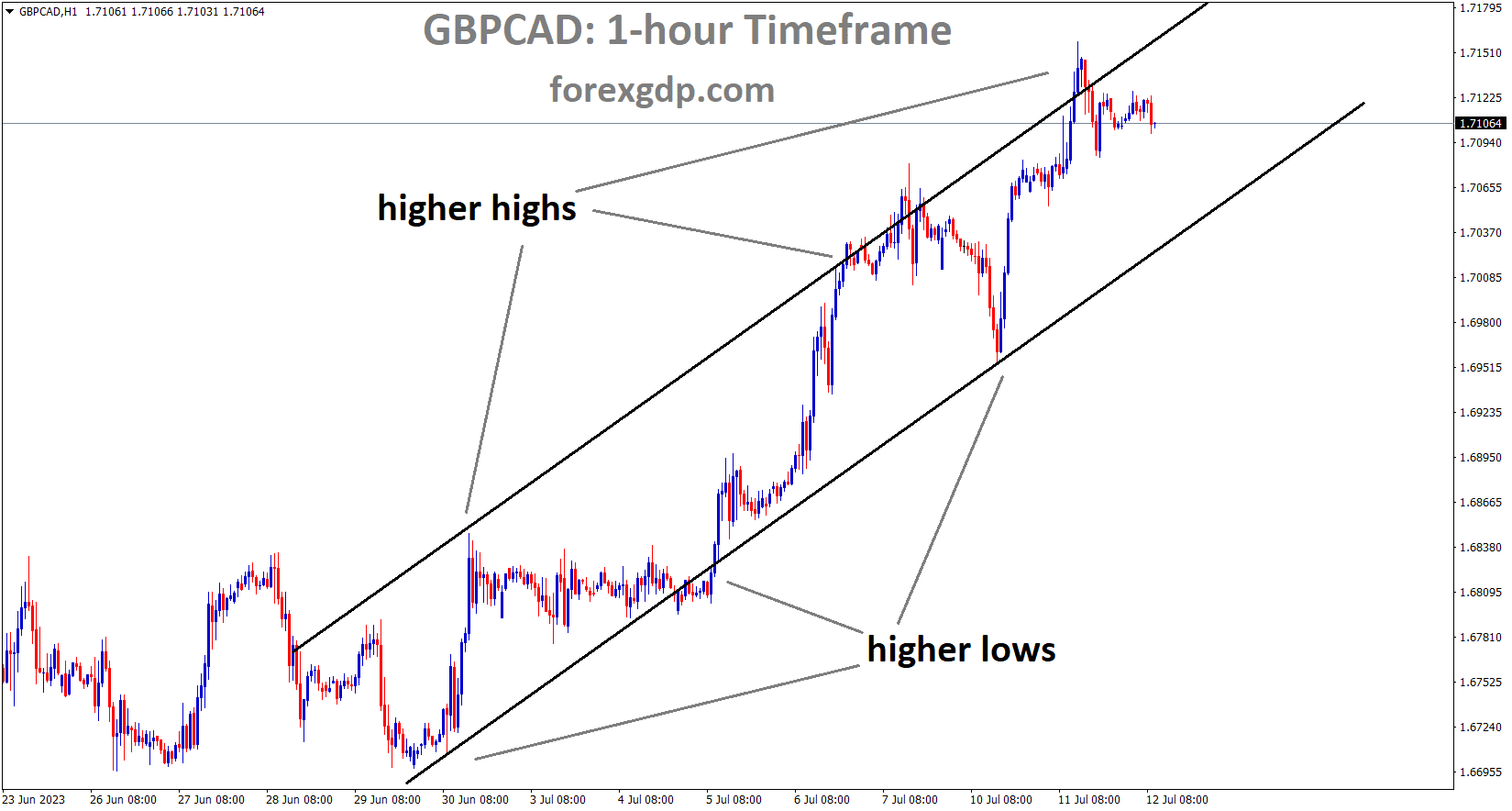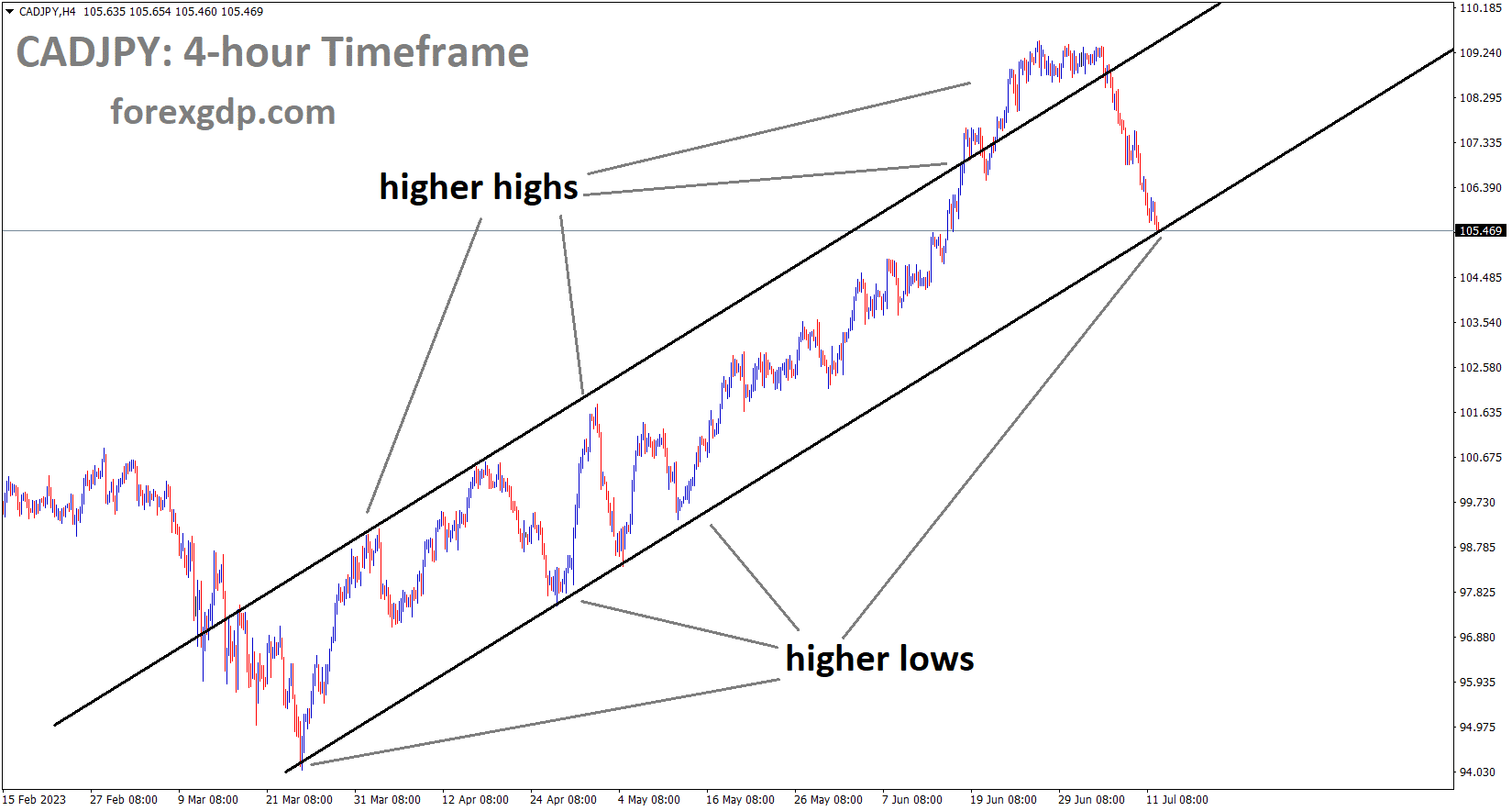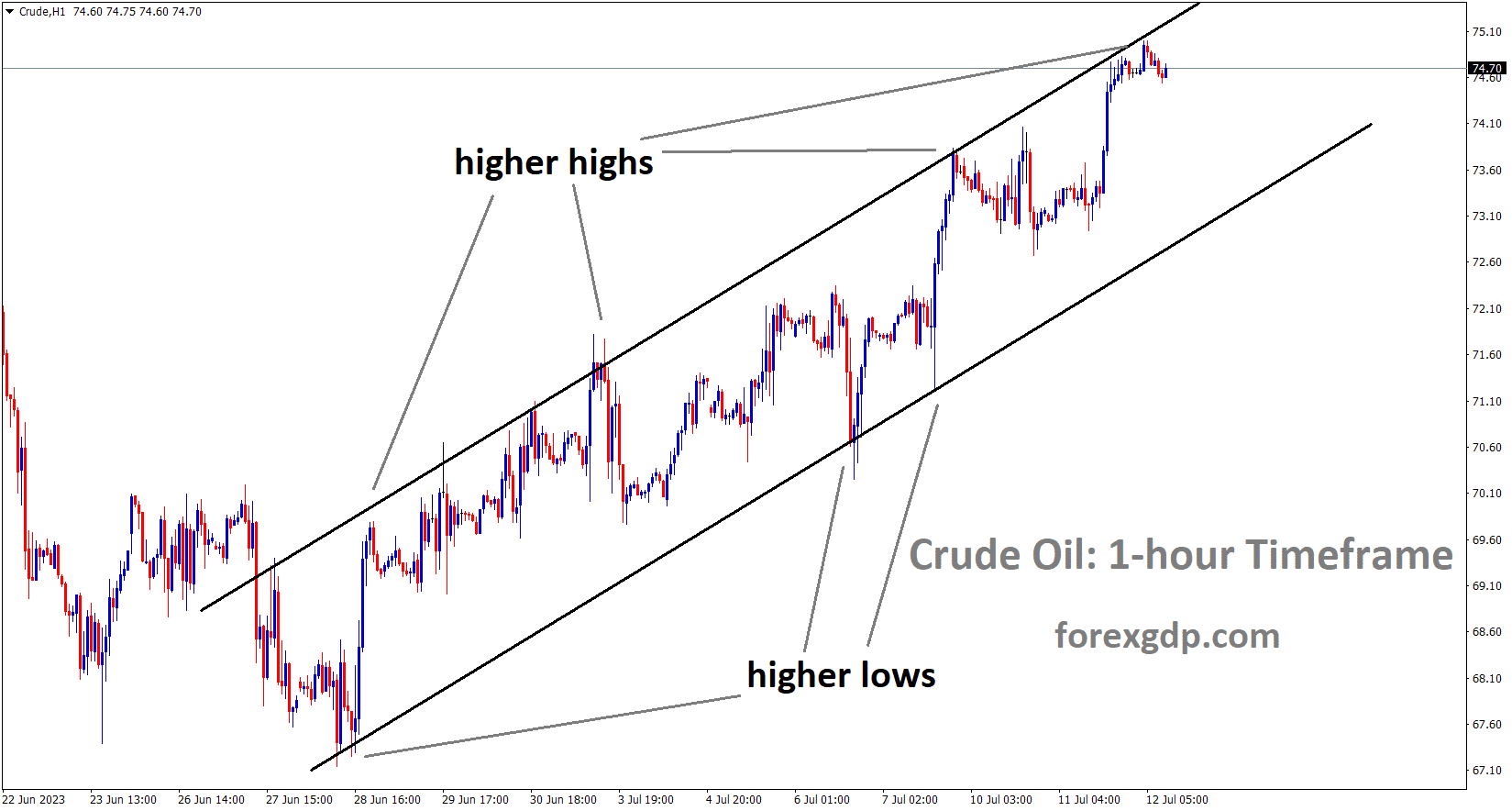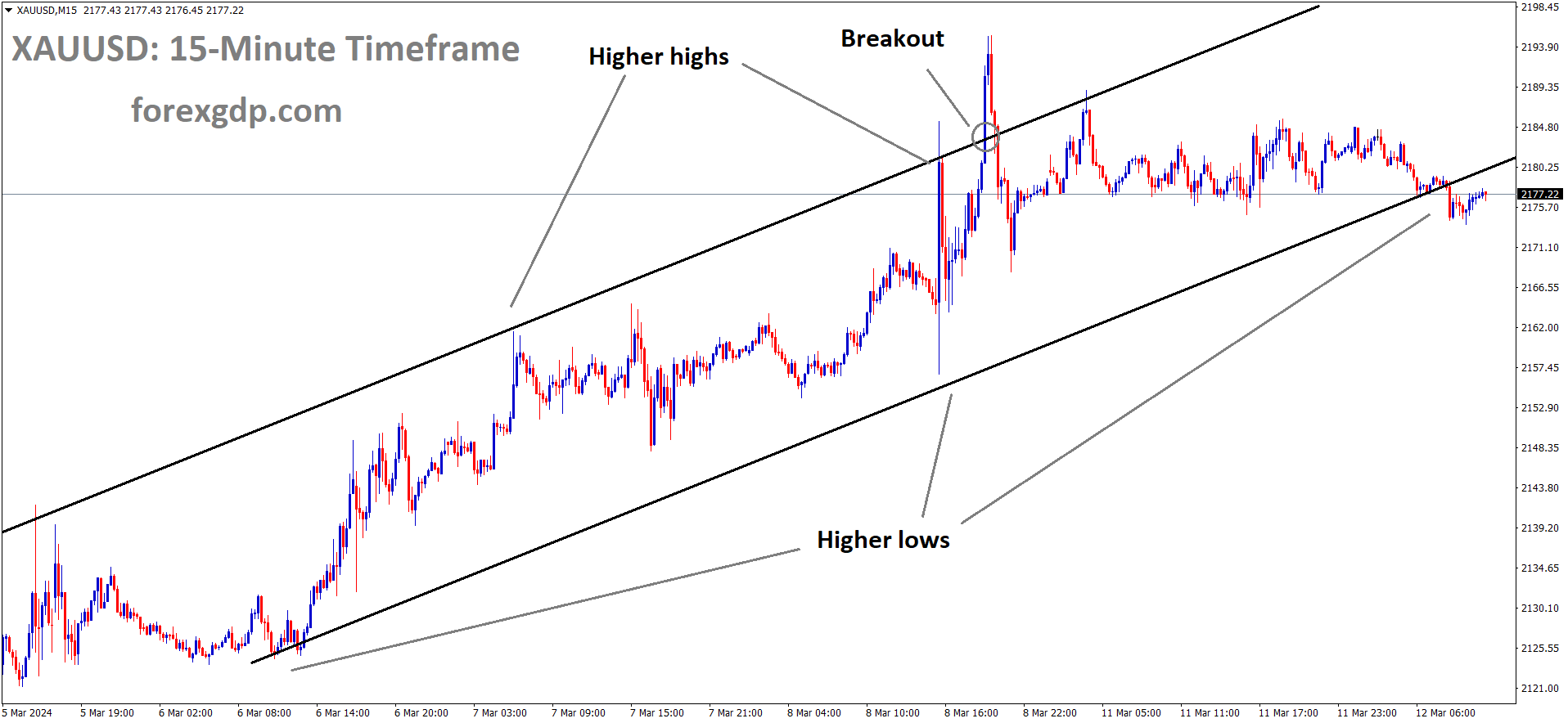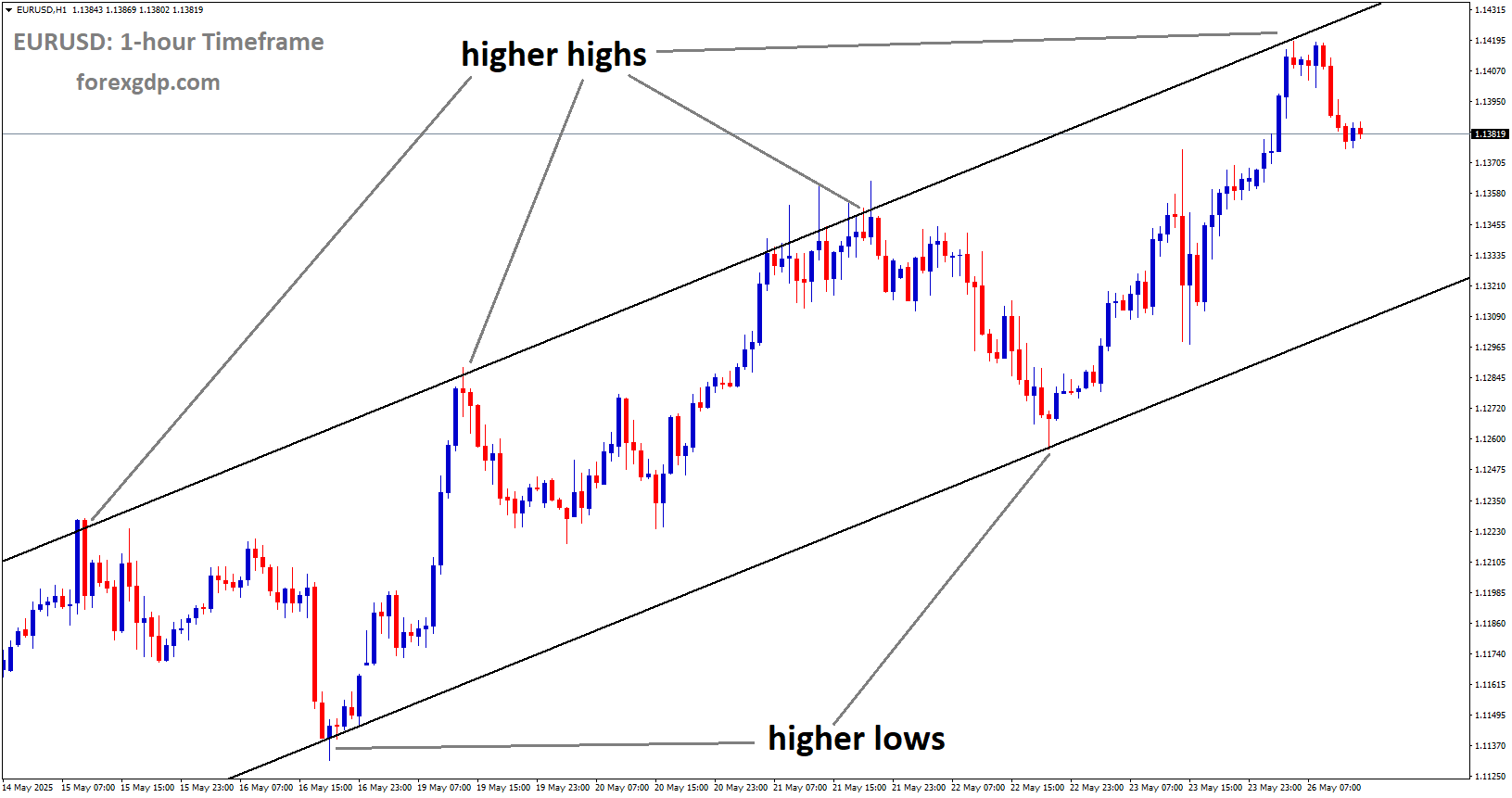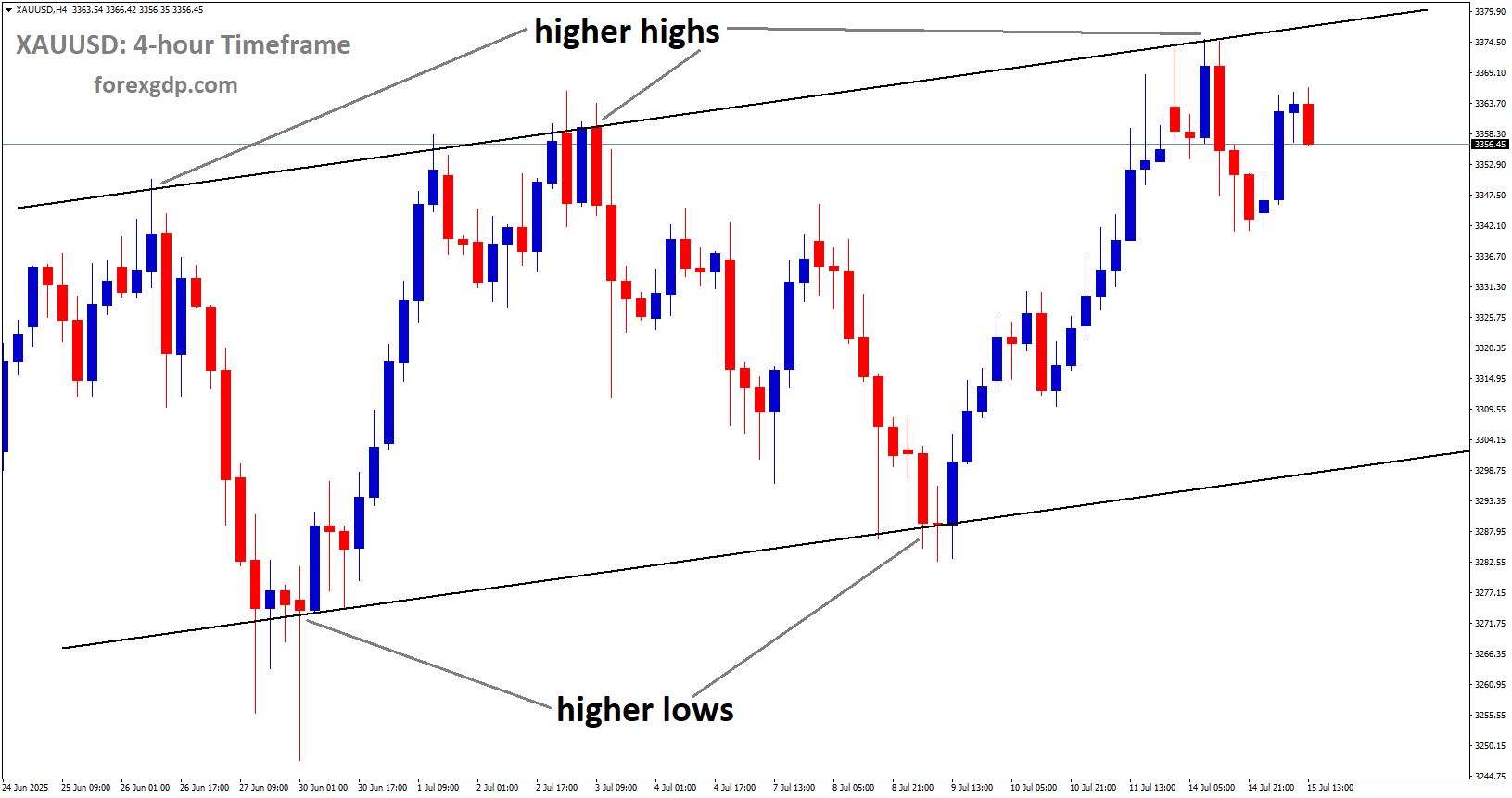USDCAD has broken the Ascending channel in downside
The Bank of Canada is considering a 25 basis points rate hike in its upcoming meeting, influenced by strong job growth and increased consumer spending in Canada. Inflation, which stood at 8.1% last year, has slowed down to 3.4% in May. As a result, there is a possibility of the cash rate rising to 5.00% from its current level of 4.75% in this meeting.
BoC plays a crucial role in maintaining economic stability and controlling inflation through its interest rate policy. This article examines the current expectations surrounding the Bank of Canada’s interest rate decision, evaluates key economic indicators, and analyzes the impact of interest rate hikes on the housing market and affordability.
1. The Bank of Canada’s Interest Rate Hike Decision

1.1 The Need for Further Interest Rate Hikes
The Bank of Canada’s decision to raise interest rates stems from concerns about inflationary pressures and the need to maintain price stability. Despite the economic uncertainties, some experts argue that additional rate hikes are necessary to curb inflation and promote sustainable economic growth.
1.2 Economic Indicators and Inflation Concerns
The Bank of Canada closely monitors various economic indicators to assess the need for interest rate adjustments. Key factors include employment data, wage growth, inflation rates, and productivity gains. Persistent inflation above the bank’s 2% target and wage growth trends may influence the decision to raise interest rates further.
1.3 Mixed Signals from Recent Economic Data
Recent economic data has presented a mixed picture, making the interest rate decision more challenging.
EURCAD has broken the Box pattern in upside
While job creation remains robust, the unemployment rate has increased, and wage growth has slowed down. These conflicting signals create uncertainty about the overall health of the economy and its impact on inflation.
1.4 Expectations and Market Sentiments
Financial markets have priced in a high likelihood of a quarter-point interest rate hike. However, the Bank of Canada’s communication and its new forecast for economic growth and inflation will play a significant role in shaping market expectations. The market’s reaction to the interest rate decision will have implications for various sectors, including mortgages and real estate.
1.5 Potential Impact on Mortgage Holders and the Housing Market
Another interest rate hike will affect mortgage holders, especially those with variable-rate mortgages or mortgages coming up for renewal. It may also impact the summer housing market, potentially slowing down real estate activity. The consequences for housing affordability and the overall stability of the housing market need to be carefully considered.
2. Assessing Economic Conditions
2.1 The Canadian Labor Market

The labor market is a crucial indicator of economic health. While recent job reports have shown continued job creation, the increase in the unemployment rate suggests challenges in keeping up with rapid population growth. Evaluating employment data helps determine the strength of the labor market and its potential impact on inflation.
2.2 Wage Growth and Its Impact on Inflation
The Bank of Canada has been closely monitoring wage growth as it relates to inflation. Wage growth above productivity gains can lead to higher inflationary pressures. Understanding wage trends is crucial for the central bank’s decision-making process, as it aims to balance economic growth with inflation control.
2.3 Impact of Interest Rate Hikes on Consumer Delinquencies and Business Outlook
As interest rates rise, the affordability of borrowing decreases. This can lead to an increase in consumer delinquencies and impact overall consumer spending.
GBPCAD is moving in an Ascending channel and the market has fallen from the higher high area of the channel
Additionally, businesses’ outlook may be influenced by interest rate hikes, as higher borrowing costs affect their investment decisions and growth prospects.
2.4 Inflation Trends and Core Inflation Measures
While overall inflation has moderated from its peak, core inflation measures, which exclude volatile components such as energy and food prices, have remained sticky. Core inflation provides insights into underlying price pressures and helps the central bank gauge the effectiveness of its monetary policy measures.
2.5 Potential Risks of Over-Tightening Monetary Policy
There are risks associated with over-tightening monetary policy. Raising interest rates too quickly or aggressively could disrupt economic growth, hinder investment, and dampen consumer spending. The Bank of Canada must strike a balance between controlling inflation and avoiding excessive tightening that could harm the economy.
3. Housing Market Analysis
3.1 Overview of the New Housing Price Index
The New Housing Price Index provides insights into the changes in housing prices across Canada. Analyzing its trends helps identify regional variations and overall market conditions. Recent data has shown a slight increase in prices after a period of decline, but year-over-year comparisons indicate a downward trend.
3.2 Regional Variations in Housing Prices
Housing prices vary across different census metropolitan areas (CMAs). Some CMAs have experienced declines in housing prices, while others have seen increases. Analyzing regional variations helps understand the factors influencing housing affordability and market dynamics in specific areas.
3.3 Affordability Challenges and Market Conditions
Housing affordability remains a significant concern in many Canadian cities. Rising interest rates contribute to higher mortgage costs, impacting the affordability of homes.
CADJPY is moving in an Ascending channel and the market has reached the higher low area of the channel
It is important to assess market conditions, including supply and demand dynamics, to understand the affordability challenges faced by potential homebuyers.
3.4 Impact of Interest Rate Hikes on Housing Affordability
Interest rate hikes directly affect mortgage rates, making homeownership more expensive. This can have a substantial impact on housing affordability, particularly for first-time homebuyers and those with variable-rate mortgages or mortgages up for renewal. Higher borrowing costs may result in reduced demand and slower growth in the housing market.
3.5 Projections for Housing Supply and Demand
Balancing housing supply and demand is crucial for a stable housing market. Projections for housing supply and demand help assess whether the market is adequately meeting the needs of potential homebuyers. Understanding these projections can provide insights into future affordability and market stability.
4. The Bank of Canada’s Role in Housing Market Stability

4.1 The Canadian Home and Mortgage Corporation’s Findings
The Canadian Home and Mortgage Corporation (CMHC) conducts research and provides insights into the housing market. Their findings highlight the challenges of housing affordability and the potential impact of interest rate hikes on homeownership. Understanding CMHC’s analysis helps policymakers and stakeholders navigate the complex dynamics of the housing market.
4.2 Balancing Housing Supply and Demand
The Bank of Canada plays a crucial role in balancing housing supply and demand through its monetary policy decisions. By influencing borrowing costs, the central bank can indirectly impact the housing market’s stability. Striking the right balance between controlling inflation and promoting housing affordability is essential for sustainable economic growth.
4.3 Effects of Higher Mortgage Rates on Affordability
Higher mortgage rates resulting from interest rate hikes can significantly affect housing affordability.
Crude is moving in an Ascending channel and the market has reached the higher high area of the channel
The affordability of homes directly impacts households’ financial well-being and their ability to enter the housing market. The Bank of Canada must consider these effects when making interest rate decisions.
4.4 Relationship Between Interest Rates and Spending Behavior
Interest rates have a profound influence on spending behavior. Higher rates can discourage borrowing and spending, potentially impacting various sectors of the economy, including housing. The Bank of Canada’s interest rate decisions aim to manage inflation while maintaining a healthy level of consumer spending.
4.5 Impact of Interest Rate Hikes on the Housing Market
Interest rate hikes can impact the housing market in multiple ways, including reduced demand, slower price appreciation, and increased borrowing costs for homeowners. The timing and pace of interest rate adjustments are crucial to ensure a stable and sustainable housing market.
Conclusion
The Bank of Canada’s interest rate decisions have far-reaching implications for the Canadian economy and the housing market. Evaluating economic conditions, understanding inflation trends, and monitoring housing market dynamics are essential for making informed policy decisions. Striking the right balance between inflation control and housing affordability will be key to ensuring long-term economic stability and sustainable growth.
Don’t trade all the time, trade forex only at the confirmed trade setups.
Get Live Free Signals now: forexgdp.com/forex-signals/

